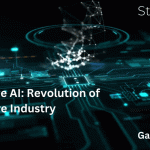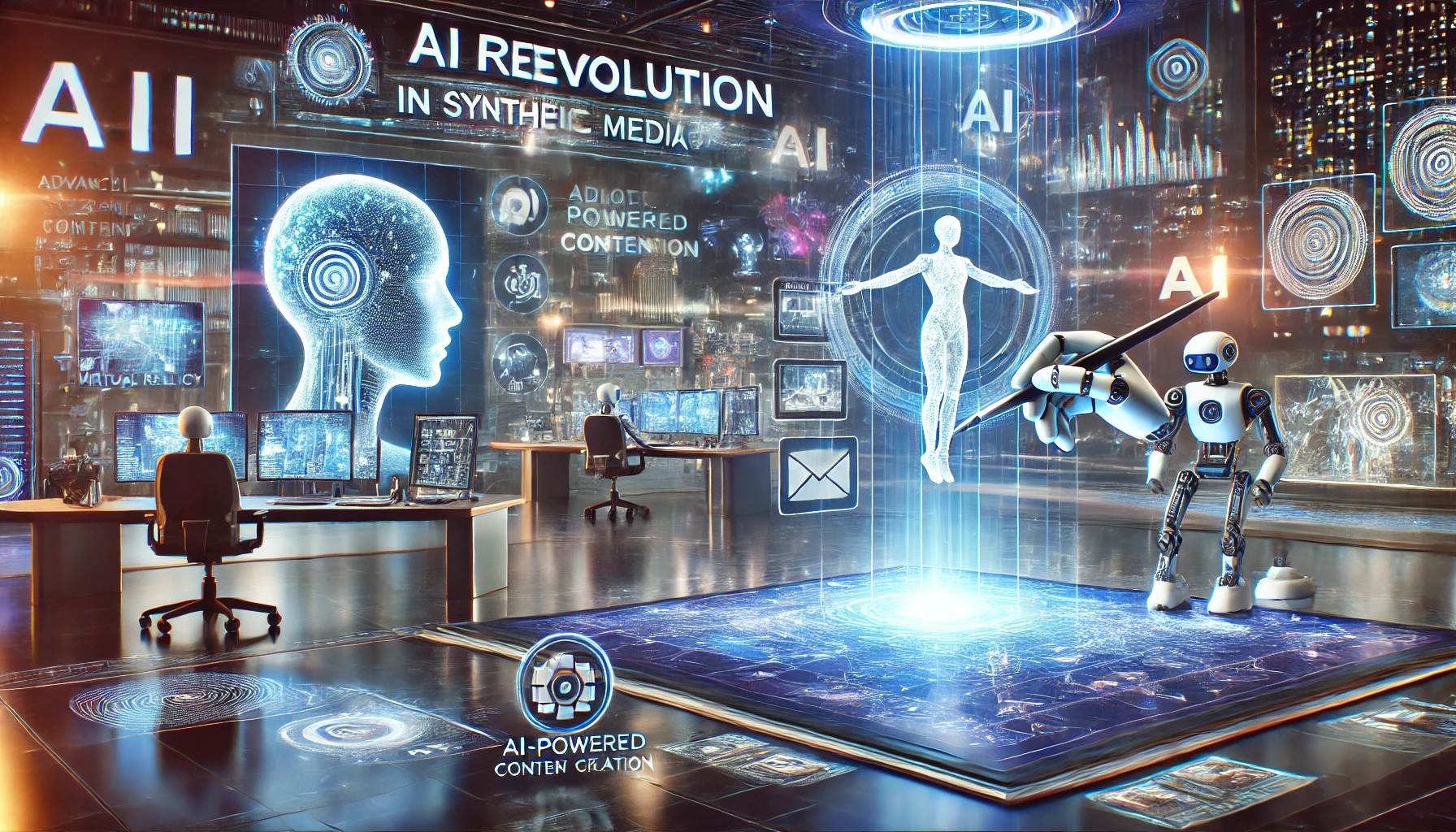Generative AI: How It’s Disrupting Industries and Changing the World
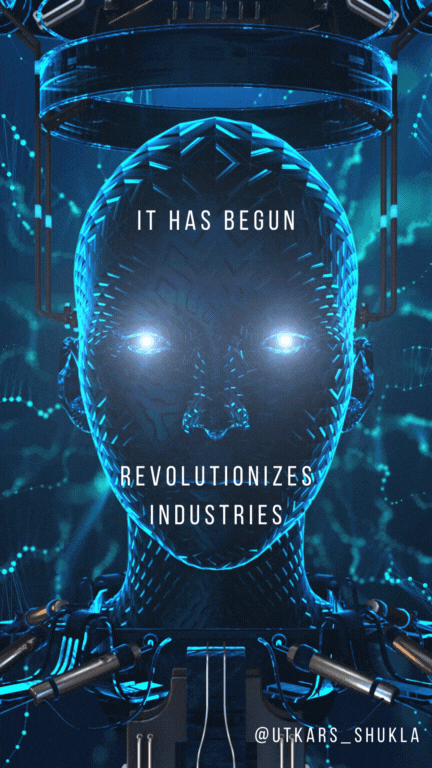
What, Why and How of Generative AI
In recent years, the field of artificial intelligence (AI) has witnessed significant advancements, with generative AI emerging as a groundbreaking technology. Generative AI refers to a subset of AI that focuses on creating new content, such as images, music, text, and even videos, mimicking human-like creativity and innovation. By leveraging deep learning techniques and massive datasets, generative AI has the potential to revolutionize various industries, from entertainment and art to healthcare and manufacturing. This article delves into the what, why, and how of generative AI, exploring its applications and implications.
What is Generative AI
Generative AI is a branch of AI that aims to generate original and valuable content by learning from patterns and examples. Unlike traditional AI systems, which rely on rule-based programming or statistical analysis, generative AI utilizes deep learning models, such as generative adversarial networks (GANs) and variational autoencoders (VAEs), to produce new data based on training examples. These models learn the underlying patterns and structures of the data, enabling them to generate new instances that are indistinguishable from real data.
Why Generative AI Matters

- Creative Content Generation: Generative AI enables the automated creation of high-quality content, such as realistic images, music compositions, and even entire stories. This has significant implications for various industries, such as gaming, advertising, and content creation, by reducing the need for human labor and enabling rapid prototyping and ideation.
- Design and Innovation: By harnessing generative AI, designers and innovators can explore a vast design space and generate novel solutions to complex problems. Whether it’s architectural designs, product prototypes, or fashion concepts, generative AI assists in pushing the boundaries of creativity, enabling the discovery of new designs and ideas that may have remained unexplored otherwise.
- Personalization and Recommendation Systems: Generative AI is instrumental in improving personalized experiences and recommendation systems. By analyzing user preferences and generating tailored recommendations, generative AI enhances user engagement and satisfaction across e-commerce, entertainment platforms, and social media networks.
- Data Augmentation and Synthesis: In data-driven domains, generative AI helps address the challenge of limited training data. By generating synthetic data, it augments existing datasets, thereby improving the performance of machine learning models. This is especially beneficial in areas where acquiring labeled data is expensive or time-consuming.
How Generative AI Works
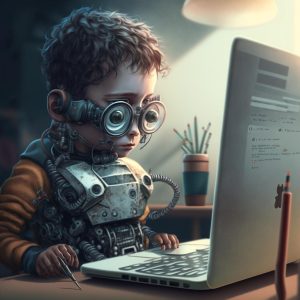
Generative AI employs a variety of deep learning techniques, such as GANs, VAEs, and recurrent neural networks (RNNs), to generate new content. Here’s a high-level overview of the generative AI process:
- Training: The generative AI model is fed with a large dataset of examples, allowing it to learn the patterns, structures, and features of the data. The model adjusts its internal parameters through a process known as training, optimizing its ability to generate realistic and novel outputs.
- Generation: Once trained, the generative AI model can generate new instances by sampling from the learned patterns. For instance, a GAN consists of two components: a generator network and a discriminator network. The generator network generates synthetic data, while the discriminator network tries to distinguish between real and synthetic data. Through an iterative process, both networks improve their performance, resulting in increasingly realistic outputs.
- Evaluation and Refinement: The generated content is evaluated using various metrics, such as visual quality, coherence, or relevance. Based on the evaluation, the generative AI model can be refined by adjusting its architecture, training techniques, or dataset to improve the quality of the generated outputs.
Challenges and Ethical Considerations

While generative AI offers exciting possibilities, it also poses several challenges and ethical considerations. These include:
- Intellectual Property and Copyright: As generative AI creates content that resembles existing work, issues regarding intellectual property and copyright arise. Determining ownership and the potential for copyright infringement becomes complex, demanding new legal frameworks and policies.
- Bias and Fairness: Generative AI models learn from the data they are trained on, and if the training data contains biases, the generated outputs may also exhibit those biases. Ensuring fairness and eliminating bias in generative AI systems is essential to avoid perpetuating societal prejudices.
- Misuse and Fraud: Generative AI can be misused to generate fake news, counterfeit products, or deepfake videos, leading to misinformation and fraudulent activities. Deploying safeguards and detection mechanisms is crucial to address these concerns.
How Generative AI Revolutionizes All Industries
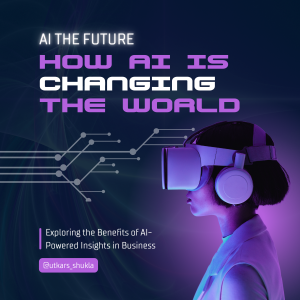
In the realm of artificial intelligence (AI), generative AI stands out as a groundbreaking technology that has the potential to revolutionize numerous industries. With its ability to generate new and unique content, from images and videos to text and music, generative AI has the power to transform the way we create, innovate, and engage with technology. By harnessing the capabilities of generative AI, industries across the board can unlock unprecedented levels of creativity, efficiency, and problem-solving. We will explore how generative AI is poised to revolutionize all industries and pave the way for a new era of innovation and transformation.
Revolutionizing the Telecom Industry: The Power of Generative AI
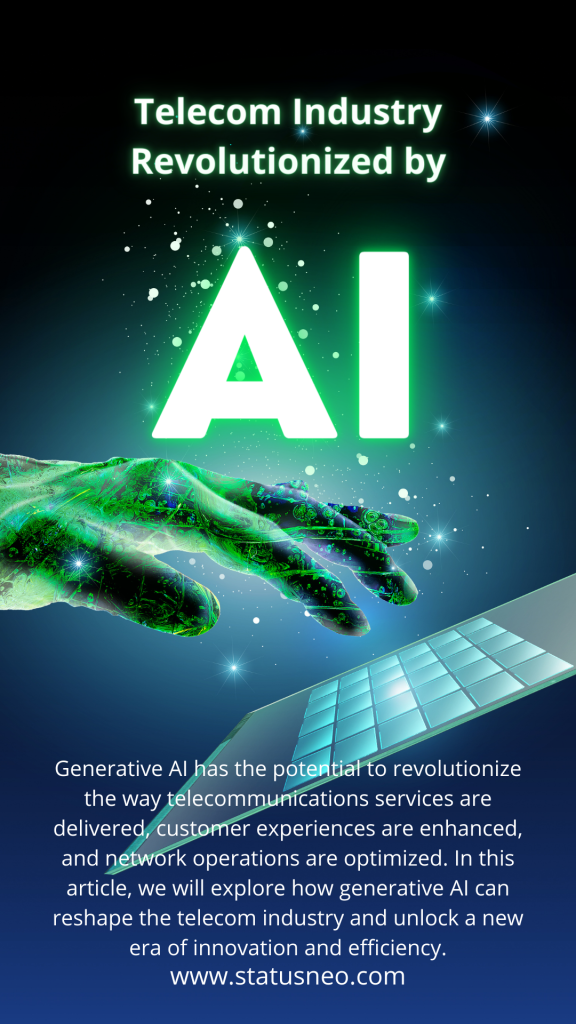
The telecommunications industry has always been at the forefront of technological advancements. From the invention of the telephone to the rise of mobile networks, this industry has constantly evolved to meet the changing demands of consumers. Now, with the emergence of generative artificial intelligence (AI), the telecom industry stands on the brink of another significant transformation. Generative AI has the potential to revolutionize the way telecommunications services are delivered, customer experiences are enhanced, and network operations are optimized. In this article, we will explore how generative AI can reshape the telecom industry and unlock a new era of innovation and efficiency.
- Enhanced Customer Experience:
Generative AI can significantly enhance the customer experience in the telecom industry. AI-powered chatbots and virtual assistants can provide personalized, real-time support to customers, addressing their queries and resolving issues efficiently. These AI systems can understand natural language, analyze customer data, and provide accurate and relevant responses. Whether it’s troubleshooting network problems, managing subscriptions, or recommending suitable plans, generative AI can streamline customer interactions and improve overall satisfaction.
Additionally, generative AI can revolutionize customer engagement through personalized marketing campaigns. By analyzing vast amounts of customer data, AI algorithms can generate targeted advertisements, tailored offers, and individualized recommendations. This level of personalization can help telecom companies boost customer loyalty, increase conversion rates, and create a more engaging and impactful marketing strategy.
- Network Optimization:
The telecom industry relies heavily on efficient network operations to provide seamless connectivity and high-quality services. Generative AI algorithms can play a crucial role in optimizing network performance and capacity planning. By analyzing network data, AI can predict traffic patterns, identify potential bottlenecks, and proactively allocate network resources to ensure optimal performance.
Moreover, generative AI can enable dynamic network optimization. AI algorithms can automatically adjust network parameters, such as bandwidth allocation, routing protocols, and transmission power, based on real-time conditions. This adaptability ensures that the network remains efficient and resilient, even in the face of changing demands and unforeseen events.
- Predictive Maintenance:
Generative AI can transform the way telecom companies handle equipment maintenance. By analyzing sensor data from network devices, AI algorithms can detect patterns and anomalies that indicate potential failures or performance degradation. This predictive maintenance approach allows companies to identify and address issues proactively, minimizing downtime and reducing operational costs.
Furthermore, generative AI can optimize the scheduling of maintenance activities. By considering historical data, AI algorithms can predict the optimal time for maintenance, ensuring that it does not disrupt critical services and minimizing the impact on customers. This predictive approach saves time, reduces unnecessary maintenance, and improves overall network reliability.
- Network Security:
In the telecom industry, ensuring the security of customer data and network infrastructure is of paramount importance. Generative AI can enhance network security by analyzing vast amounts of data and identifying potential security threats. AI algorithms can detect patterns of malicious activities, identify network vulnerabilities, and predict future attack vectors. This proactive approach enables telecom companies to strengthen their security measures and protect their systems from cyber threats.
Furthermore, generative AI can be employed to develop advanced authentication systems. AI algorithms can analyze user behavior patterns, device characteristics, and contextual information to authenticate users more accurately. This reduces the risk of unauthorized access and enhances overall network security.
Conclusion:
Generative AI has the potential to revolutionize the telecom industry by enhancing the customer experience, optimizing network operations, enabling predictive maintenance, and strengthening network security. By leveraging the power of AI, telecom companies can deliver personalized services, optimize network performance, reduce downtime, and improve overall operational efficiency. As the telecom industry embraces generative AI, we can expect a new era of innovation and transformation that will shape the future of connectivity for years to come.
Transforming Healthcare: The Revolution of Generative AI

The healthcare industry plays a crucial role in our lives, constantly striving to provide better patient care, improve diagnoses, and develop innovative treatments. With the advent of generative artificial intelligence (AI), the healthcare sector is on the brink of a significant transformation. Generative AI has the potential to revolutionize healthcare by leveraging its ability to generate novel insights, analyze vast amounts of patient data, and facilitate advanced medical research. In this article, we will explore how generative AI can revolutionize the healthcare industry, empowering healthcare professionals, improving patient outcomes, and driving innovation in medical practices.

- Medical Image Analysis and Diagnostics:
Generative AI has the potential to revolutionize medical image analysis and diagnostics. Medical imaging techniques such as X-rays, CT scans, and MRI generate enormous amounts of data that can be challenging to interpret accurately and efficiently. However, with generative AI, algorithms can be trained to analyze medical images, detect abnormalities, and provide more accurate diagnoses. This technology has the potential to assist radiologists in identifying subtle patterns and anomalies, reducing diagnostic errors, and improving patient outcomes.
Generative AI can also aid in generating synthetic medical images, such as simulated X-rays or MRIs. These synthesized images can be used to augment scarce or incomplete datasets, facilitate medical training and education, and provide valuable insights for research and development of new treatments.
- Personalized Treatment and Drug Discovery:
Generative AI can significantly impact personalized treatment and drug discovery processes. By analyzing large-scale patient data, including electronic health records (EHRs), genomics, and clinical trials, AI algorithms can identify patterns and correlations that may lead to more accurate diagnoses and personalized treatment plans. This technology enables healthcare providers to tailor treatments based on individual patient characteristics, improving efficacy and minimizing adverse effects.
Furthermore, generative AI can revolutionize the drug discovery process. By simulating molecular structures and interactions, AI algorithms can assist in designing new drugs, predicting their efficacy, and accelerating the development timeline. This has the potential to streamline the drug discovery process, reducing costs and enabling the development of targeted therapies for specific diseases.
- Precision Medicine and Genomics:
Precision medicine aims to deliver targeted treatments based on an individual’s unique genetic makeup, lifestyle, and environment. Generative AI can play a vital role in advancing precision medicine by analyzing complex genomic data and identifying genetic markers associated with diseases. AI algorithms can uncover hidden patterns and genetic predispositions, enabling early detection, risk assessment, and personalized treatment plans.
Moreover, generative AI can facilitate the interpretation of genomic data by generating synthetic genomic sequences for research and analysis. This technology allows researchers to manipulate and explore different scenarios without relying solely on limited, real-world data.
- Virtual Assistants and Patient Care:
Generative AI-powered virtual assistants have the potential to revolutionize patient care and support healthcare professionals. Virtual assistants can provide personalized health advice, answer patient queries, and assist with medication management. They can also offer reminders for appointments, monitor vital signs remotely, and detect any changes that may require immediate attention. By augmenting the capabilities of healthcare providers, virtual assistants can enhance patient experiences, improve access to care, and alleviate the burden on healthcare systems.
Conclusion:
Generative AI holds immense potential to revolutionize the healthcare industry by improving medical image analysis, facilitating personalized treatments, advancing precision medicine, and transforming patient care. As healthcare providers and researchers harness the power of generative AI, we can expect enhanced diagnoses, more targeted treatments, and a paradigm shift in the way healthcare is delivered. While challenges related to data privacy, ethical considerations, and regulatory frameworks remain, the integration of generative AI in healthcare offers promising opportunities to improve patient outcomes, drive innovation, and shape the future of medicine.
The IoT Revolution: Unleashing the Power of Generative AI

The Internet of Things (IoT) has ushered in a new era of connectivity, enabling devices and systems to seamlessly communicate and exchange data. As the IoT continues to expand, the integration of generative artificial intelligence (AI) presents a transformative opportunity. Generative AI algorithms have the potential to revolutionize the IoT industry by enabling devices to learn, adapt, and make intelligent decisions. In this article, we will explore how generative AI can revolutionize the IoT industry, unlocking innovative applications, enhancing operational efficiency, and paving the way for a connected future.
- Intelligent Data Analytics:
Generative AI can revolutionize data analytics in the IoT ecosystem. With the massive amount of data generated by interconnected devices, extracting valuable insights and making informed decisions can be a daunting task. However, generative AI algorithms can analyze and interpret this data in real-time, identifying patterns, anomalies, and trends that would be challenging for humans to detect.
By leveraging generative AI, IoT systems can generate meaningful and actionable insights, allowing businesses to optimize operations, predict maintenance needs, and make data-driven decisions. This intelligent data analytics can improve efficiency, reduce costs, and enhance overall performance across various sectors, such as manufacturing, logistics, and smart cities.
- Autonomous Decision-Making:
Generative AI enables IoT devices to make autonomous decisions based on learned patterns and data analysis. With AI algorithms embedded in IoT devices, they can adapt and respond to changing conditions without constant human intervention. For example, in smart homes, AI-powered IoT devices can learn individual preferences and adjust lighting, temperature, and security settings accordingly, enhancing convenience and energy efficiency.
In industrial settings, generative AI algorithms can enable IoT devices to detect faults, perform predictive maintenance, and optimize resource allocation in real-time. These autonomous decision-making capabilities improve operational efficiency, reduce downtime, and optimize resource utilization across industries.
- Enhanced Security and Privacy:
Security and privacy are critical concerns in the IoT landscape. Generative AI can play a significant role in enhancing the security of IoT networks and devices. AI algorithms can detect anomalies, identify potential cyber threats, and proactively respond to security breaches. By analyzing vast amounts of data and network patterns, generative AI can strengthen IoT security measures, preventing unauthorized access, and mitigating potential risks.
Moreover, generative AI can enhance privacy in the IoT ecosystem. With AI algorithms capable of anonymizing and encrypting data, IoT devices can ensure the confidentiality of sensitive information. This allows individuals and organizations to confidently embrace the benefits of IoT without compromising their privacy.
- Smart Predictive Maintenance:
Generative AI can revolutionize the maintenance practices in the IoT industry. By analyzing real-time data from IoT devices, AI algorithms can predict and detect equipment failures or performance degradation before they occur. This enables proactive maintenance, reducing downtime and optimizing the lifespan of IoT devices and systems.
Predictive maintenance powered by generative AI can lead to significant cost savings, improved reliability, and enhanced customer satisfaction. For example, in the transportation industry, AI algorithms can analyze data from vehicle sensors to predict maintenance requirements and optimize fleet management, ensuring efficient operations and minimizing disruptions.
Conclusion:
Generative AI has the potential to revolutionize the IoT industry by empowering intelligent data analytics, enabling autonomous decision-making, enhancing security and privacy, and optimizing maintenance practices. As the IoT ecosystem expands and becomes increasingly interconnected, the integration of generative AI will unlock innovative applications, improve operational efficiency, and shape the future of connected technologies. While challenges related to data governance, interoperability, and ethical considerations persist, the transformative potential of generative AI in the IoT industry is undeniable, ushering in a new era of connectivity and intelligence
Role of Generative AI in other Industries

Here are some of the ways that generative AI is already being used in different industries:
- Marketing: Generative AI can be used to create personalized marketing campaigns that are tailored to each individual customer. For example, generative AI can be used to generate personalized email marketing campaigns, social media posts, and website content.
- Finance: Generative AI can be used to generate personalized investment recommendations, analyze market data, and test different scenarios to propose new trading strategies.
- Healthcare: Generative AI can be used to create personalized medical treatments, diagnose diseases, and develop new drugs. For example, generative AI can be used to generate personalized cancer treatment plans, identify potential side effects of new drugs, and create new drug molecules.
- Manufacturing: Generative AI can be used to design new products, optimize manufacturing processes, and improve quality control. For example, generative AI can be used to design new car parts, optimize the assembly line, and identify potential defects in products.
- Retail: Generative AI can be used to personalize shopping experiences, recommend products, and improve customer service. For example, generative AI can be used to recommend products based on a customer’s purchase history, personalize the layout of a store, and answer customer questions in real time.
These are just a few examples of the ways that generative AI is being used today. As generative AI technology continues to develop, it is likely to have a profound impact on many other industries as well.
Here are some of the potential benefits of generative AI:
- Increased productivity: Generative AI can automate many tasks that are currently done by humans, freeing up time for people to focus on more creative and strategic work.
- Improved customer experience: Generative AI can be used to create personalized experiences for customers, which can lead to increased customer satisfaction and loyalty.
- New product development: Generative AI can be used to design new products and services that meet the needs of customers better than ever before.
- Improved decision-making: Generative AI can be used to analyze data and identify patterns that would be difficult or impossible for humans to see. This can help businesses make better decisions about everything from product development to marketing campaigns.
Overall, generative AI has the potential to revolutionize many industries and make our lives easier, more efficient, and more enjoyable.
Still Curious? Visit my website to know more! Github Link
For more interesting Blogs Visit- Utkarsh Shukla Author, Utkarsh Shukla Blogs
Add Comment
You must be logged in to post a comment.




